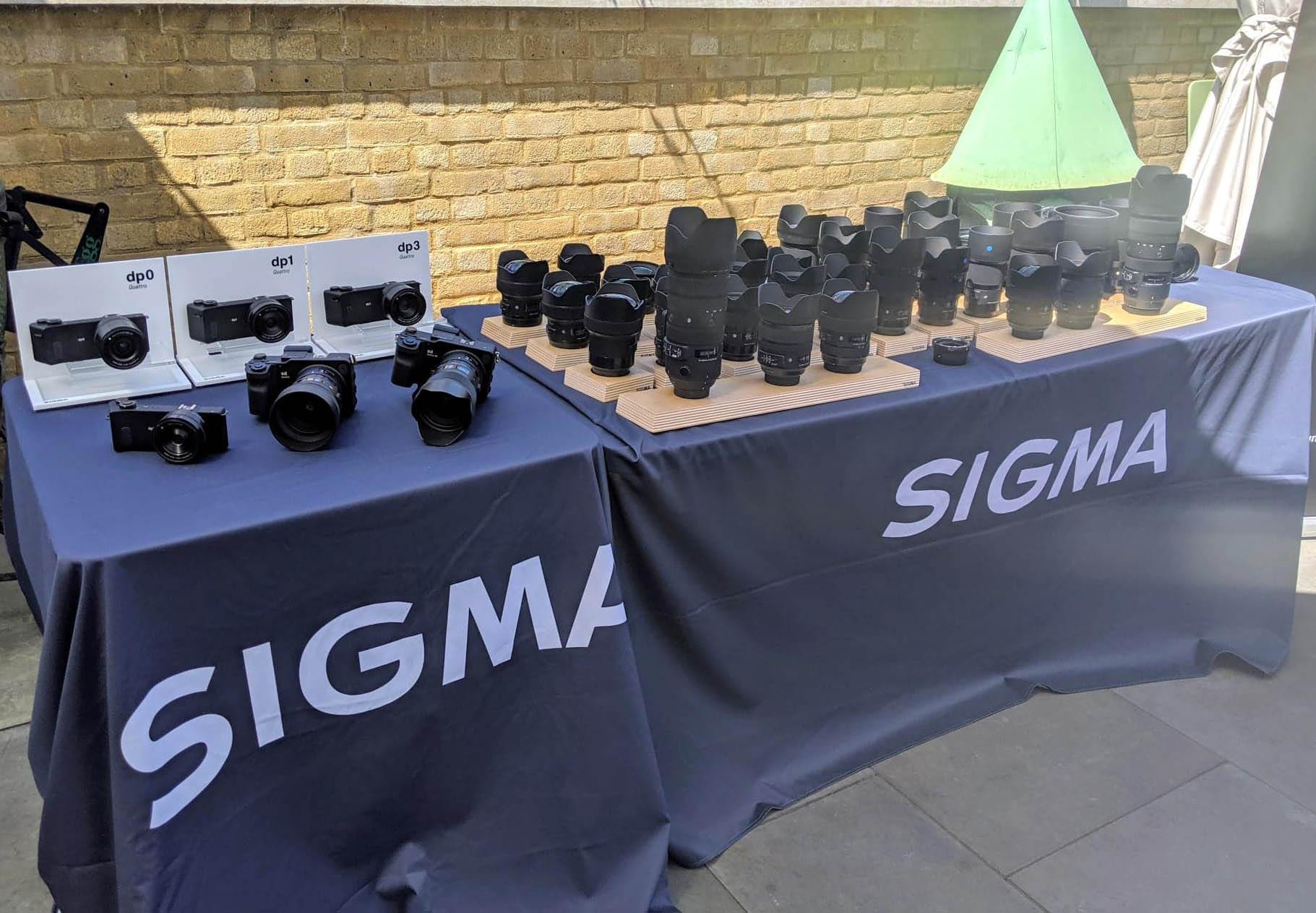It has been a busy year for Sigma; as well as producing a wide range of quality lenses for established camera mounts and its own cameras, the company also announced its involvement in the L mount alliance with Panasonic and Leica. At the end of June, Sigma organised a three-day event in London called Made in Aizu. This gave dealers, journalists and competition winners the chance to learn more about the company’s new L mount lenses and adaptors, as well as the culture of Aizu, the beautiful and historic region of Japan where this family-owned company is based.

As well as the chance to see some of Sigma’s hottest lenses (see end of story), an essential part of this three-day event was the appearance of two traditional geisha performers from Aizu, Mai Watanabe and Chiyono Watanabe (no relation). Needless to say, AP was very keen to be involved, so together with Sigma and photo-competition site, Photocrowd, we ran a very popular competition to give 10 photographers the chance to shoot Mai and Chiyono in their full regalia and oshiroi white make-up – along with expert guidance from professional portrait and fashion photographer, Dave Kai Piper.
So, on a blazing hot June 27, the winners assembled in central London along with Dave and myself to shoot the geisha. As we’ll see, it was a busy but rewarding day, which generated some fantastic images and portrait photography insights for all involved.
Lighting challenge
We mentioned the day was hot. While the strong, blasty sunlight, bearing down on a Soho hotel roof, was much more welcome than pouring rain, this was not without its challenges. Each of the 10 winning photographers had 10-15 minutes with the geisha, so Dave Kai Piper had to make sure the lighting was set up beforehand – even more so as each photographer was using their own camera and lenses, though many also took the opportunity to try the other lenses Sigma brought along for the event.
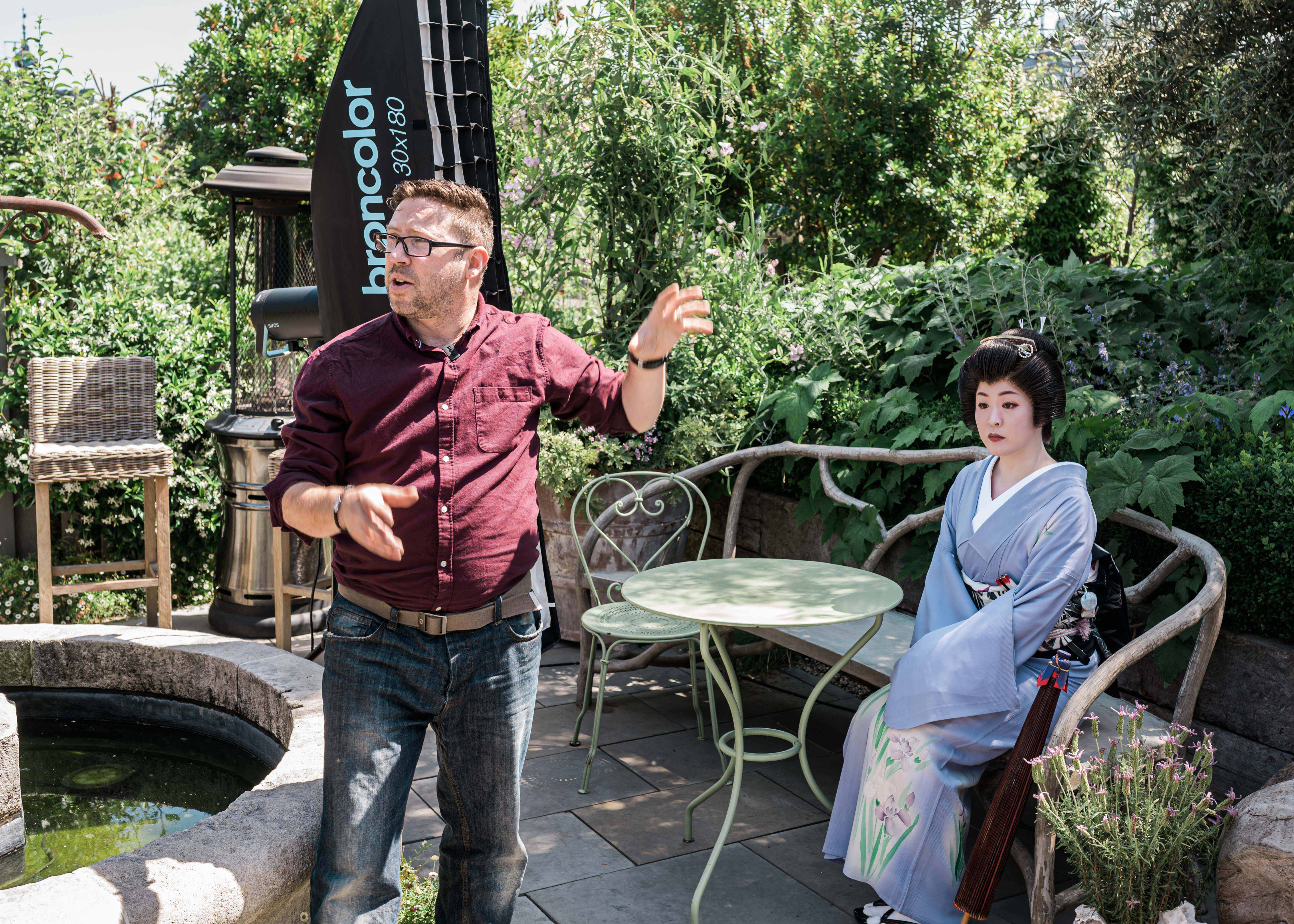
“Harsh sunlight is certainly a challenge,” Dave explains. “I brought along two Broncolor series 400-watt flash heads plus two 30×180 Broncolor softboxes, combined with a range of grids and diffusion panels. When adding additional light to ambient light (ie, the sunlight) my first priority was to find the ambient exposure on the camera settings and then adjust to underexpose it. I tend to adjust to about two stops under the natural light, depending on the style of the image. If I get everyone on the same setting, I know how to adjust to a very different range of cameras. As a rough setting, the group used ISO 100 and the fastest flash sync of 1/160 or 1/250. I left each photographer to work out which aperture they wanted work with, which changed from camera to camera and as the light shifted.”
Three point lighting
Before the actual shooting started, Dave and his assistants set up the two Broncolour lights to work as the fill and main lights, ending up with a three-point lighting system. “Within the two 30×180 strip lights, we wrapped double diffusion panels on one half of the softbox and a just a single panel with the grid on the other half. This helped us to shape the light and control the light quickly. Three-point lighting setups are great for working quickly on location, and particularly good when you have a strong and constant ambient lighting. As the sun moved we had to keep a close eye on highlights and ensuring the lighting balanced everything out.
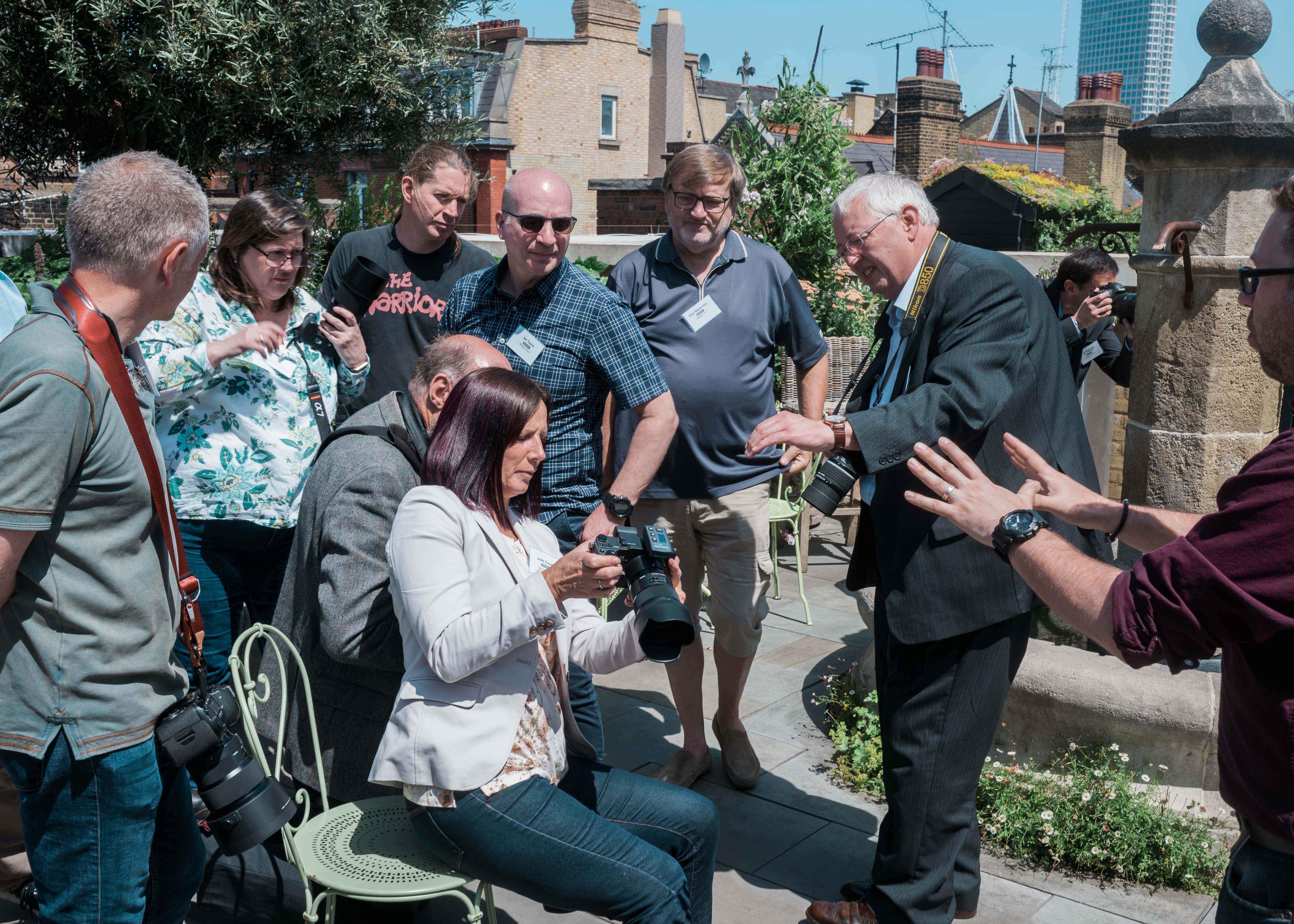
Working quickly was especially important with the geisha, as they were sitting there in in hot weather with heavy, perfectly applied make-up and formal kimono. I’d say the secret to mixed lighting set-ups is carefully controlling the camera settings and understanding how additive light can blend with ambient light.”
Once Dave was happy with the lighting set-up, Sigma UK general manager, Graham Armitage, formally opened the event, along with Hideaki Nishioka from Sigma Japan’s international division. The two geisha, Mai and Chiyono, then performed some exquisite traditional dances and songs; following a technical briefing from Dave, the ten competition winners started shooting in earnest. A selection of the winners explain how they got on and what they learned. I’m sure you will agree, their images were fantastic…
 Steve Mundy, Maidenhead
Steve Mundy, Maidenhead
Olympus OM-D E-M1X
“I am not a natural studio/portrait photographer so I always find it helpful for an expert to talk through their approach. Dave did a very good job of explaining what he wanted to achieve. I learnt how to ‘overpower’ the sun in order to get some modelling on the geisha’s face against a very bright background. This is opposite to the normal situation in a studio, where you can turn down/off the background lighting and build it up to get the effect you want. It was also interesting to see that Dave did all the lighting set-ups without referring to a light meter, instead relying on the camera and the image review/histogram instead. I would have struggled on my own in that light, but came away with some great images.”

Andrew Robertson, London
Canon EOS 5D Mark IV
“I was surprised and delighted to be in involved in the day as I am a landscape and architectural photographer, so have never shot with flash and lights before. Dave explained very clearly what you he was trying to achieve with the lights and how you achieve that. Obviously it would take a lot of practice but was great introduction and made me think about the possibilities of mixing ambient with artificial lighting for outdoor portraits.”
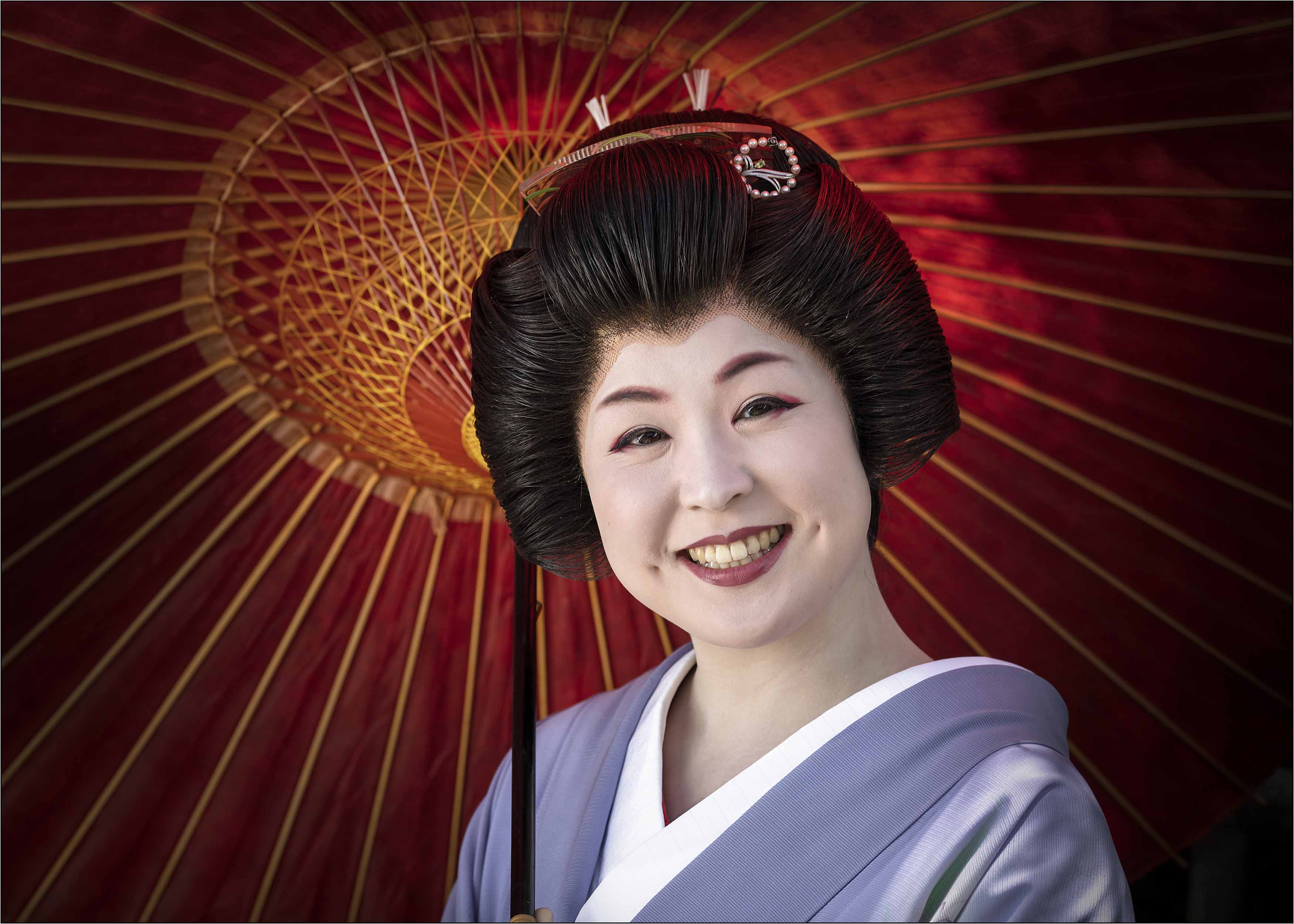
Steve James, Northampton
Nikon D850
“The stage was set under the terrace canopy that heavily diffused the strong sunlight, and I set the matrix metering to +1 stop to balance the light and avoid the background turning grey. The conditions gave a lovely soft texture to the images that would prove to be my favourites of the day. Against a white background with natural pastel tones, some of my results had a painterly feel… Anyway, Dave Kai Piper had his work cut out in the strong light, but was a great tutor. The idea was to balance the dappled garden light with fill flash. The ever-moving light had its challenges and this gave us a good chance to try out some Sigma lenses. Although sharpness is not everything, the 135mm f/1.8 prime I tried would make the finest samurai sword seem like a club! The Geisha were charming too, and their amusement at my attempts to communicate led to some great expressions.”

Julie Cavell, Worksop
Canon EOS 7D Mark II
“Having the opportunity to photograph the Aizu geisha was fantastic! They were brilliant subjects, with their lovely clothes and make-up, and it was great learning about Japanese culture and seeing them dance too. Along with Dave’s help on how to use flash lighting in an outdoor portrait session, I learnt how to set up the lighting system gradually, allowing the final image to be perfectly lit. This reduced any shadows from the overhead sun, and enabled the subject to stand out whilst minimising the highlights. I got so much out of the day and came home with some really memorable images and memories.”
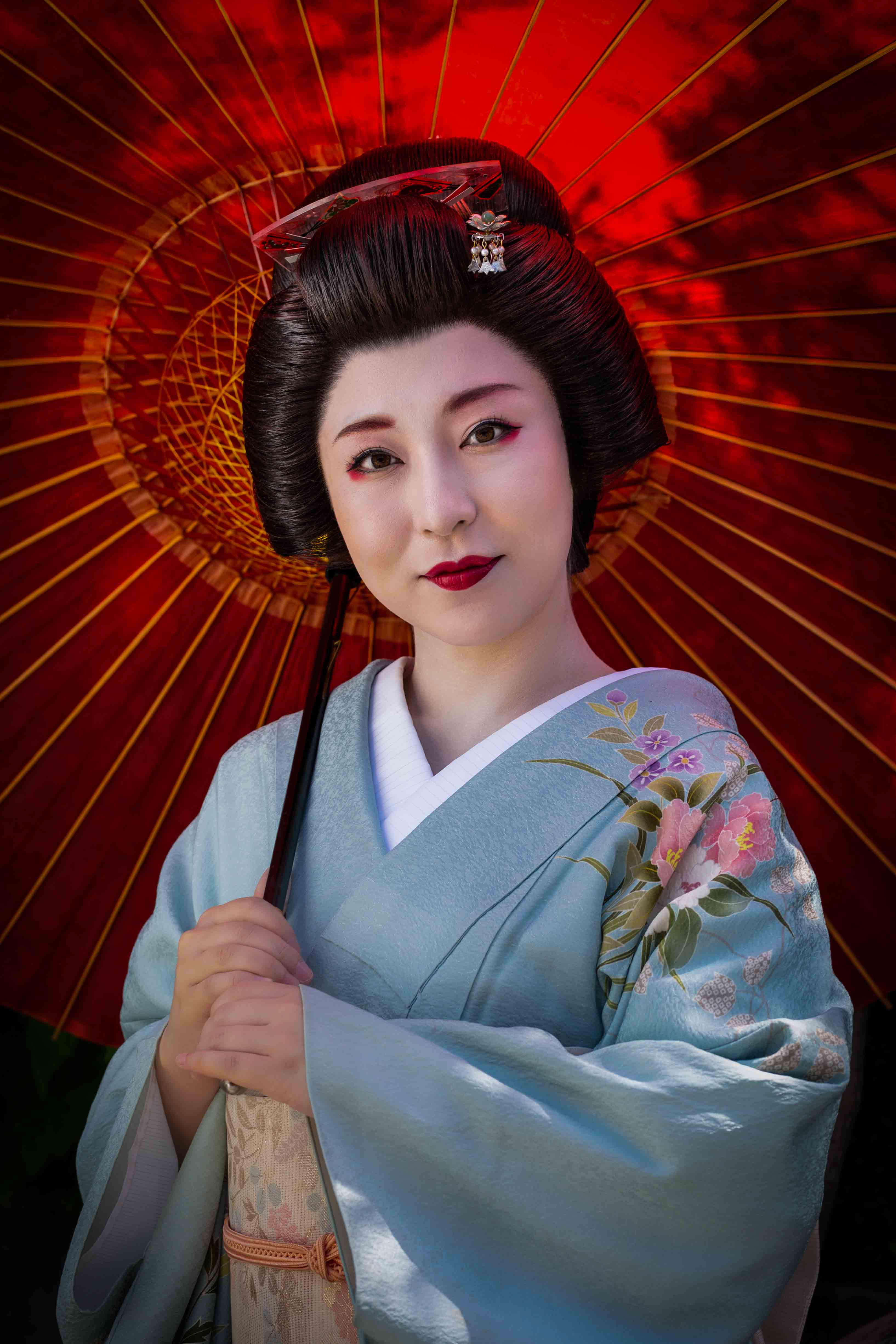
Dominic Beaven, London
Canon EOS 5D Mark III
“To be able to photograph two genuine Japanese geishas at such a great location, with the added bonus of studio lights, was a once in a lifetime opportunity for me. It was also great to try out lots of amazing lenses as well as network with Sigma and fellow photographers. Minus the sunburn I really enjoyed my day and got some great images thanks to Dave and his assistant, Simon.”
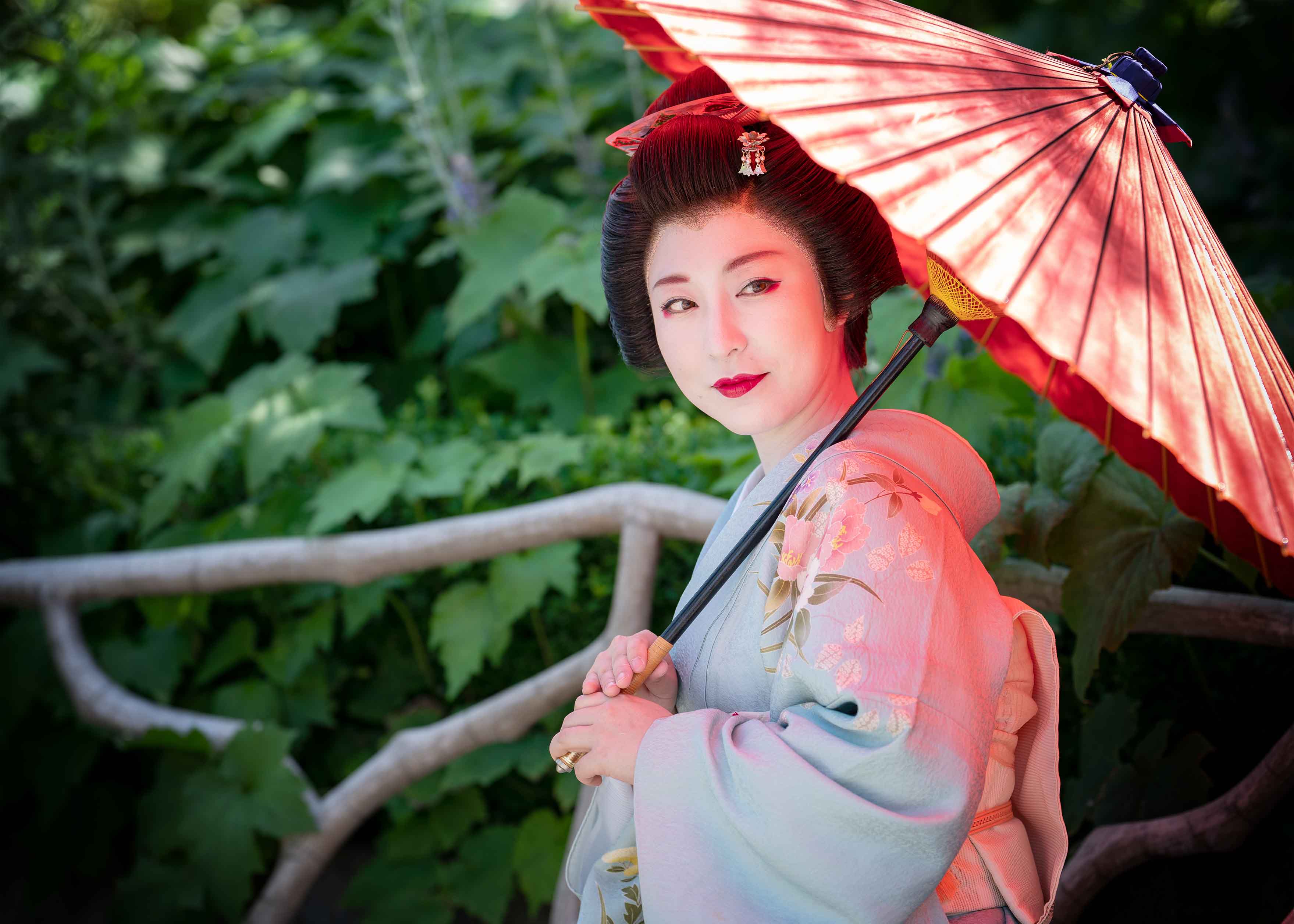
Sarah Mawdsley, Liverpool
Sony A7R III
“A great day. I didn’t really do much in terms of lighting before, as I prefer images shot in ambient light, but there is a marked difference between my ambient-light geisha shots and the flash shots, with the artificially lit winning. A key take-home lesson was the amount of preparation time spent in finding the right spot and angle to place the lights. This is not so practical for my travel portraits.”
What Sigma brought along on the day
A range of lenses were available for the competition winners to try, including the full frame Art primes (14mm to 135mm) in L-mount, along with EF, NA and SE mount. Sigma also brought its “Pro Trio” (14-24mm F2.8, 24-70mm F2.8 and 70-200mm F2.8).
